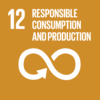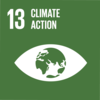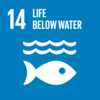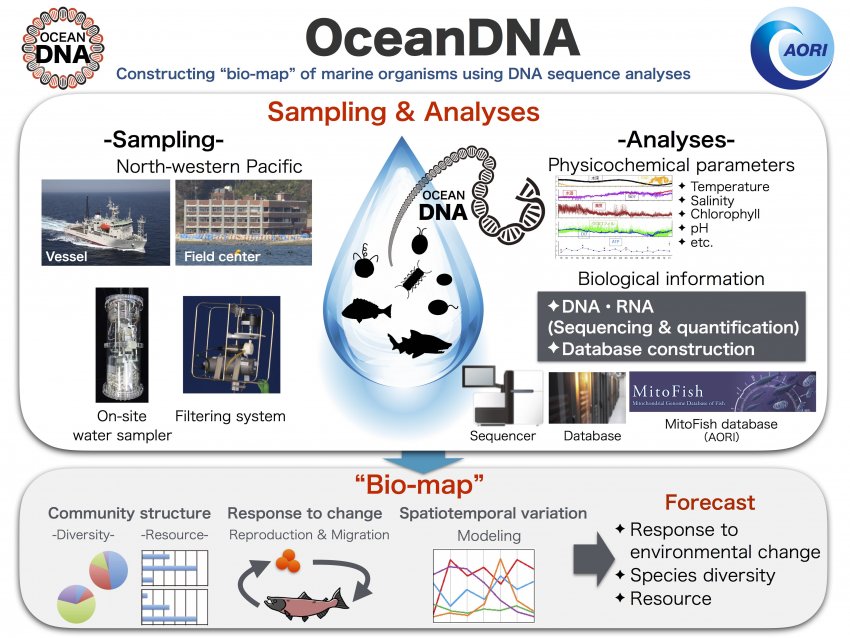Ocean DNA: Constructing “Bio-map” of Marine Organisms using DNA Sequence Analyses
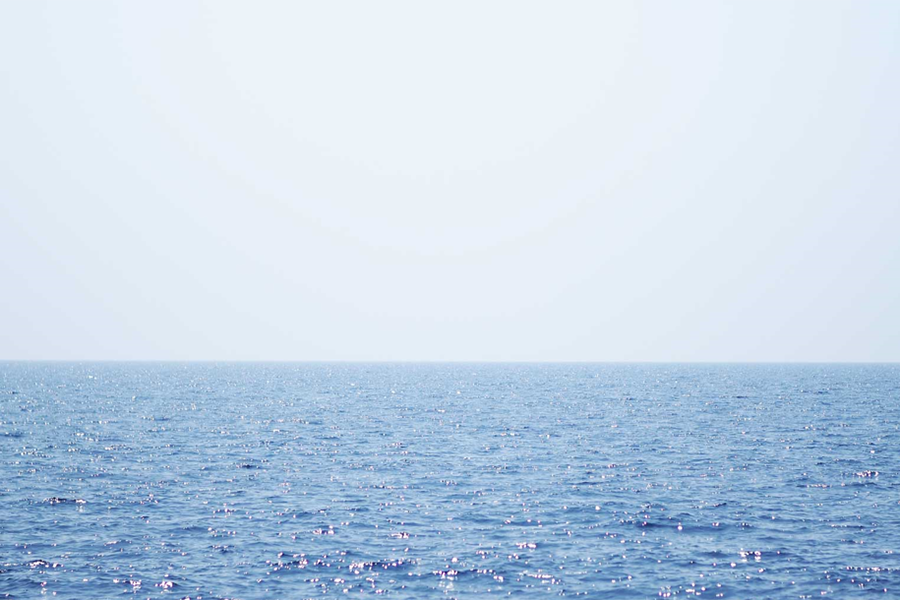

Susumu Yoshizawa
Atmosphere and Ocean Research Institute
Center for Earth Surface System Dynamics Professor
What kind of living organisms, where, and how many of them are present in the marine environment? This is a basic question, but the answer has yet to be discovered. Meanwhile, it is believed that humankind has captured many marine animals as food resources and has significantly reduced marine resources as a result. In this project, by using the latest DNA analysis technology and intensive field observations, we will create a bio-map of marine life groups existing in Northwest Pacific Ocean. Furthermore, we will develop an algorithm that can enable us to estimate the amount of marine resources by using the obtained information.
In order to properly conserve, maintain and utilize marine resources, it is essential to comprehensively understand their food chain structure. However, this has not been achieved yet due mainly to methodological limitations. The information obtained through this project will allow us to find ways to appropriately utilize and manage marine life groups and to determine the amount of food resources in the ocean for humankind to consume in a sustainable manner.
In order to properly conserve, maintain and utilize marine resources, it is essential to comprehensively understand their food chain structure. However, this has not been achieved yet due mainly to methodological limitations. The information obtained through this project will allow us to find ways to appropriately utilize and manage marine life groups and to determine the amount of food resources in the ocean for humankind to consume in a sustainable manner.
Research collaborators
- Wataru Iwasaki, Department of Biological Sciences, Graduate School of Science
- Susumu Hyodo, Atmosphere and Ocean Research Institute
- Tomohiko Kawamura, Atmosphere and Ocean Research Institute
- Susumu Hyodo, Atmosphere and Ocean Research Institute
- Tomohiko Kawamura, Atmosphere and Ocean Research Institute
Related publications
- Miyake, Y., Kimura, S., Horii, T., Kawamura, T. 2017. Larval dispersal of abalone and its three modes: a review. Journal of Shellfish Research. 36: 157-167.
- Hiraoka, S., Machiyama, A., Ijichi, M., Inoue, K., Oshima,, K., Hattori, M.,Yoshizawa, S., Kogure K., Iwasaki, W. 2016. Genomic and metagenomics analysis of microbes in a soil environment affected by the 2011 Great East Japan Earthquake Tsunami. BMC Genomics. 17.53.
- Wataru Iwasaki, Tsukasa Fukunaga, Ryota Isagozawa, Koichiro Yamada, Yasunobu Maeda, Takashi P. Satoh, Tetsuya Sado, Kohji Mabuchi, Hirohiko Takeshima, Masaki Miya, and Mutsumi Nishida. MitoFish and MitoAnnotator: A mitochondrial genome database of fish with an accurate and automatic annotation pipeline. Molecular Biology and Evolution, 30, 2531-2540. (2013).
- Hiraoka, S., Machiyama, A., Ijichi, M., Inoue, K., Oshima,, K., Hattori, M.,Yoshizawa, S., Kogure K., Iwasaki, W. 2016. Genomic and metagenomics analysis of microbes in a soil environment affected by the 2011 Great East Japan Earthquake Tsunami. BMC Genomics. 17.53.
- Wataru Iwasaki, Tsukasa Fukunaga, Ryota Isagozawa, Koichiro Yamada, Yasunobu Maeda, Takashi P. Satoh, Tetsuya Sado, Kohji Mabuchi, Hirohiko Takeshima, Masaki Miya, and Mutsumi Nishida. MitoFish and MitoAnnotator: A mitochondrial genome database of fish with an accurate and automatic annotation pipeline. Molecular Biology and Evolution, 30, 2531-2540. (2013).


